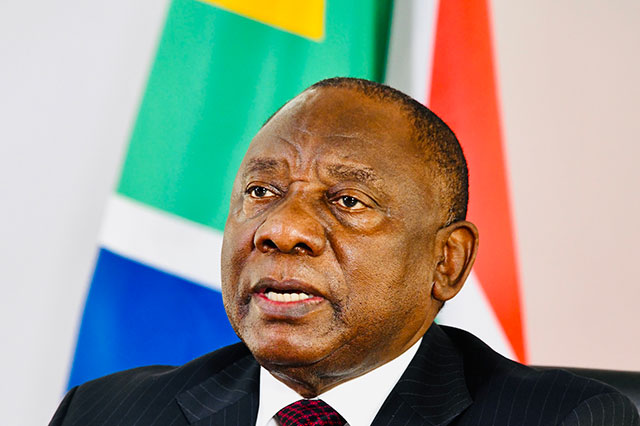Vinothan Naidoo, University of Cape Town
South African President Cyril Ramaphosa’s opening of parliament speech successfully captured the spirit of a diverse and cohesive multi-party government ready to get down to work. But it failed to tell South Africans how the new dispensation will do things differently, and better.
In the May 2024 national and provincial elections, Ramaphosa’s African National Congress party received just over 40% of the national vote, triggering a multi-party coalition government for the first time in 30 years. The results signalled frustration with the ANC’s inability to promote job-creating growth, achieve significant reductions in poverty and inequality, and demonstrate clean governance.
Ramaphosa’s speech should have been cast as a delivery re-set. It should have signalled to the country how the new government of national unity will do things differently and better than previous ANC administrations. Instead, Ramaphosa set out the problems that are already well known to most South Africans.
Ramaphosa laid out three strategic policy areas the unity government will prioritise over the next five years:
- inclusive economic growth and job creation
- reduction of poverty and the high cost of living
- building a capable, ethical and developmental state.
Based on my research on the government’s policy and governance track record, his speech was remarkably unfocused, unbalanced and at times inconsistent and unrealistic. It outlined a wishlist of familiar sounding policy themes.
A speech for unity
The speech was delivered with poignant symbolism on the birthday of South Africa’s reconciliation icon, Nelson Mandela. The president reminded South Africans of the historical significance of their electoral choice. It’s this choice that forced political opponents into a collective project and abandoning the politics of “recrimination”.
Unity anchored Ramaphosa’s speech. If this was the sole metric to evaluate its success, one would say the president succeeded. He drew on a mix of both uplifting and distressing imagery to reinforce his message of political unity. This included countless acts of service being performed across the country and around the world in honour of Mandela Day. This was set against the backdrop of devastating floods, storms and wildfires ravaging the country under a global climate emergency.
Ramaphosa laid out the unity government’s priority areas for the next five years.
Inclusive growth
The first, “inclusive growth”, justifiably attracted the most attention, given its emphasis on attracting desperately needed job-creating investments.
He didn’t acknowledge the historically problematic relationship between growth and the equitable distribution of its benefits (inclusion). Historically, economic growth hasn’t been inclusive. He didn’t say anything about how the country’s low growth rate has jeopardised even the most modest prospect for inclusive investments.
Ramaphosa also didn’t explain how after years of international investment conferences, concerns about over-regulation, high government consumption and debt-servicing costs, and poor governance, South Africa will finance the unity government’s ambitious infrastructure spending plans.
More remarkably, Ramaphosa said that municipalities would now be enlisted in the project of inclusive growth. Yet, municipalities are neither constitutionally mandated nor adequately equipped for this task. They are struggling to deliver on their core mandate: the provision of basic services.
Poverty and the cost of living
The second priority area – poverty and the high cost of living – is one that resonates with millions of South Africans. The persistence of poverty and inequality and the disproportionately high cost of living borne by the poor is a chronic problem with deep historical roots. Previous ANC administrations have struggled to address this issue. They used poverty reduction strategies, indigent policies, better quality education from reception to vocational training, improving public transport, and more accessible healthcare.
The president did cite potentially effective measures such as a review of prices of goods and services that are set through administrative decisions by government, a public entity or a regulator. There’s also the conversion of the current Social Relief of Distress grant into a broader and “sustainable” income support vehicle. But he seemed to fall short of promising a universal basic income grant.
Capable state
The third strategic policy area is one that is close to my own work, and for which I had particularly high hopes. That is improvements in the capacity, integrity and developmental potential of state institutions. It’s this area that will equip the government with the ability to deliver on the other strategic areas. Yet, Ramaphosa spent the least amount of time on this most crucial of areas.
In fact, it felt like an afterthought. In the main, the president affirmed earlier commitments. These include the professionalisation of the public service, rooting out corruption and combating gender-based violence. And also, improving the performance of state-owned enterprises through a new centralised public ownership model.
A speech that meets the moment, but is it up to the task?
Ramaphosa’s speech did meet the symbolism of a new political dispensation. But it failed to offer detail on how this new dispensation will address familiar issues in new and better ways.
Its policy content was no different from before. Except for the extended references to unity, it could have been a speech delivered after another ANC electoral majority win.
Perhaps it is unfair to expect the president and his multiparty cabinet to have worked out the details so soon. The coming weeks and months will tell whether the unity government can live up to the task South Africans have set for it.![]()
Vinothan Naidoo, Associate Professor of Public Policy and Administration, University of Cape Town
This article is republished from The Conversation under a Creative Commons license. Read the original article.
Follow African Insider on Facebook, Twitter and Instagram
Source: AFP
Picture: X/@PresidencyZA
For more African news, visit Africaninsider.com


